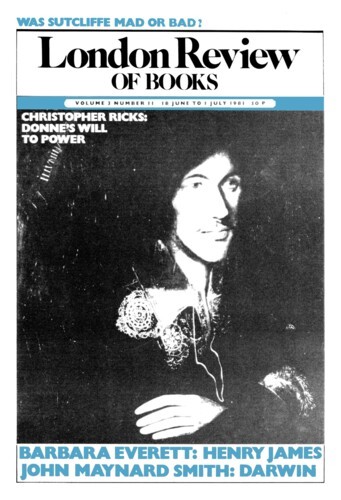In the last twenty years social anthropologists, dissatisfied with the formulations of their seniors, have experimented with a number of approaches, some of which, such as structuralism, have achieved notoriety while remaining obscure and contentious. Michelle Rosaldo is in search of meaning in culture, taking as her object of analysis the ‘text’ of what people say and do and constructing her work essentially as a translation of that text. No ‘ism’ attaches as a label to this enterprise, but it belongs to a trend in which Clifford Geertz, editor of the series to which this book belongs, has been prominent, and which Paul Rabinow has summarised in the maxim: ‘All culture is interpretation.’
This is one of Rosaldo’s starting-points for discussion. The other is her own reaction to one of the central facts of the culture she and her husband Renato went to study in the Philippines. This was headhunting. Still practised in 1967 when she first began her fieldwork, it was remembered with nostalgia and ambivalence in 1974 when she returned on a second visit. Tape-recordings of songs connected with the taking of heads provoked extreme emotional tensions, since the people had been pacified and converted to fundamentalist Christianity by the New Tribes Mission. Ilongot men felt that without headhunting they were reduced to a shameful state. When they heard the songs, it ‘made their breath twist and turn inside them; it pained them because it made them want to kill.’
Why? To answer the question Rosaldo expounds an intricate set of Ilongot terms. The basic pair gives her the title of the book: beya is knowledge and belongs only to senior adult men; liget is passion and belongs pre-eminently to unmarried junior males. Both are seen as male characteristics: women’s knowledge and passion are both thought of (and by both sexes) as less intense than those of men.
A contrast in broad terms such as these between youth and age must come close to being a cultural universal: but it is the intersection between this universal and Ilongot gender categories which gives Ilongot life its specific tone. Young men were travellers and warriors, and they had to kill and take a head before they could marry. The obligation to do so was always couched in psychological terms as young men’s desire, a product of their passion, and the taking of a victim was compared to the taking of a bride: both were thought to release the tension caused by the rise of liget to an intolerable ‘height’ in the hearts of youths.
Ideally, such violence was exerted against distant enemies; and once married a man was expected to settle down and concern himself with food-getting, as women did, his vital energies now diffused into the production of children. With the decline of passion came the rise of knowledge. Individuals trained to be proud and touchy in their youth had to learn how to live peaceably as adults. The transition is achieved by striving after beya, and using oratory as a means, Rosaldo says, of ‘negotiating anger’. Speech is a means gradually to allay and penetrate the anger of others. ‘By laying out his words and proclaiming against deception, the orator works at once to ease and stimulate the silent “anger” in his fellows’ hearts.’
Ilongot society was, and is, the combination of an egalitarian ideology operating between males and a premise of unequal relations between men and women. Women’s positions are inevitably uneasy: we see parallels between the Ilongot case and the Mediterranean ethic of ‘honour and shame’. Although women are inferior to men, wife-givers are superior to wife-takers, and the gift of a woman is the supreme gift. Young men must go to extravagant lengths to justify their male prowess to prospective affines; older men must use great verbal skill to keep such relations with in-laws in balance.
Rosaldo’s text richly illustrates and expounds these points as well as many other related Ilongot concepts: she provides a carpet of ‘thick description’ in Geertz’s terms and we can walk on it with confidence.
She also has a further aim which makes her work especially significant. Although she did elicit Ilongot ideas of the soul, and although an important cosmological aspect of headhunting was expressed in the idea that the lamet or souls of the headless brought with them energy and well-being to the homes of their killers, it is not this aspect that Rosaldo stresses. Rather she seeks her deepest meanings in everyday statements and actions, and in the contexts in which seniors and juniors, men and women, interact. Not cosmology as such, but the cultural concept of ‘person-hood’, thus becomes the centre of analysis. Headhunting is the youth’s supreme act of autonomy and self-realisation and also corresponds to the hopes of his elders that their group can reproduce themselves by seizing on this triumphant vigour ‘in the face of inevitable facts of aging and decline’. This is a finely strung account, and its notes sound true. Although, from some viewpoints, its central problem will still remain a mystery to the reader who is not an Ilongot and may be searching for materialist arguments to complement Rosaldo’s analysis of Ilongot thought, her book achieves a rich and definite level of understanding which unites the description of social process and cultural meaning in a single mode of exposition.
Send Letters To:
The Editor
London Review of Books,
28 Little Russell Street
London, WC1A 2HN
letters@lrb.co.uk
Please include name, address, and a telephone number.

